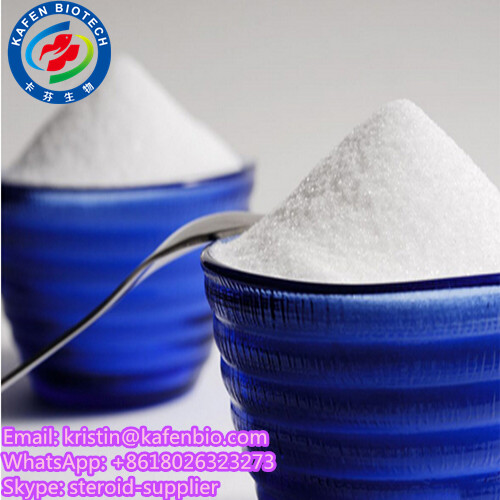| Message: | 1.Quick Details:
CAS: 53-43-0
MF: C19H28O2
MW: 288.42
Purity: 99.88%
Appearance: White crystalline powder
Usage: Adrenocortical hormone, antidepressant; Major secretory steroidal product of the adrenal gland; secretion progresively declines with aging. May have estrogen-or androgen-like effects depending on the hormonal milieu. Intracellularly converted to androstenedione. It is used in treatment of menopausal syndrome.
2.Product Description:
Dehydroepiandrosterone/dehydroepiandrostenedione , also known as androstenolone as well as 3β-hydroxyandrost-5-en-17-one or 5-androsten-3β-ol-17-one, is an important endogenous steroid hormone. In its pharmaceutical drug form it is called prasterone (INN). It is the most abundant circulating steroid hormone in humans, in whom it is produced in the adrenal glands, the gonads, and the brain, where it functions predominantly as a metabolic intermediate in the biosynthesis of the androgen and estrogen sex steroids.
However, DHEA also has a variety of potential biological effects in its own right, binding to an array of nuclear and cell surface receptors, and acting as a neurosteroid.In middle-aged men, no statistically significant effect of DHEA supplementation on lean body mass, strength, or testosterone levels was found in a randomized placebo-controlled trial.
A small study suggested DHEA supplementation was associated with increases in free (but not total) testosterone levels.In women with adrenal insufficiency and the healthy elderly there is insufficient evidence to support the use of DHEA.
DHEA and other adrenal androgens such as androstenedione, although relatively weak androgens, are responsible for the androgenic effects of adrenarche, such as early pubic and axillary hair growth, adult-type body odor, increased oiliness of hair and skin, and mild acne.
|
 my account
my account
 log out
log out
 my account
my account
 log out
log out
